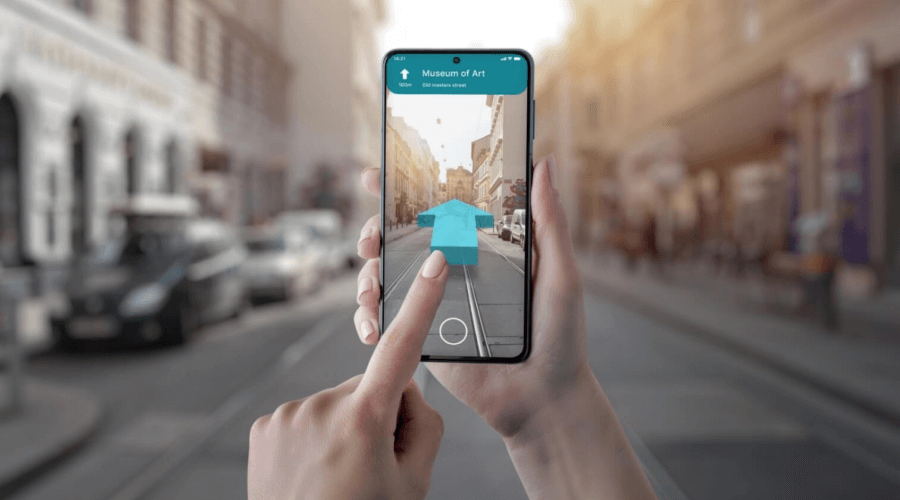From smart apps to voice-enabled translators, this new era of language barriers being broken is reshaping industries, education, travel, and diplomacy. Let’s explore how AI translation is not just changing communication — but redefining connection itself.
1. The Evolution of AI Translation Technology
Translation technology has come a long way from the early, clunky systems of the 2000s. Early translators relied on literal word-to-word conversion, often producing confusing or inaccurate results. However, the rise of OpenAI, Google DeepMind, and neural network models like Google Translate marked a turning point.
Today, AI translation uses deep learning and contextual understanding to analyze grammar, tone, emotion, and even cultural nuance. Instead of translating words mechanically, these systems now “think” about meaning — resulting in smoother, more human-like communication. As IBM AI explains, natural language processing (NLP) has allowed machines to understand intent, making translations far more accurate than ever before.
2. How Neural Networks Made Translation Human
At the heart of modern AI translation is the neural network — a system inspired by the human brain. These networks train on billions of sentences across languages, enabling them to learn context and meaning rather than just vocabulary. Tools like DeepL Translator and Google Cloud Translate have adopted these systems to deliver real-time, conversational-level accuracy.
For example, when translating idioms like “it’s raining cats and dogs,” older systems would produce nonsense. But neural models understand that it means “heavy rain.” This leap has made artificial intelligence communication feel natural and relatable — bridging emotional and cultural gaps in ways never possible before.
3. Breaking Language Barriers in Global Business
One of the greatest beneficiaries of AI translation has been international business. Companies now operate seamlessly across continents without needing massive translation departments. Platforms like Microsoft Translator for Business and Slack integrations allow employees to collaborate globally in real time, regardless of native language.
AI-powered transcription and translation tools in meetings ensure that no one is left behind. For example, Zoom now offers built-in live translation, allowing participants to follow discussions in multiple languages simultaneously. This not only enhances inclusivity but also increases efficiency in cross-border operations.
Learn more about multilingual business communication at Harvard Business Review.
4. AI Translation in Travel and Tourism
For travelers, AI translation has become the ultimate companion. Apps like Google Translate and TripLingo allow instant speech-to-text translation, turning foreign travel into a smoother, stress-free experience. Whether ordering food in Tokyo or finding directions in Paris, AI is eliminating the awkward phrasebook moments of the past.
Wearable translators, such as the Waverly Labs Pilot Earbuds, now provide real-time language conversion during conversations. This innovation is bringing us closer to a world where language barriers simply don’t exist. Travelers can communicate naturally, fostering deeper cultural connections and global understanding.
5. AI in Education: Global Classrooms Without Borders
In education, artificial intelligence communication tools are making international learning more accessible than ever. Universities now use AI-powered captioning and translation systems to connect classrooms worldwide. Students from different linguistic backgrounds can collaborate, learn, and share knowledge in real time.
Platforms such as Coursera and Udemy have integrated auto-translation tools that convert lectures into multiple languages. According to EdTech Magazine, this innovation is breaking down barriers in education, empowering students to access global knowledge regardless of language proficiency.
Out: language-based limitations.
In: global inclusivity powered by AI.
6. Healthcare Communication Made Simple
Language differences have long been a challenge in healthcare — where clear communication can save lives. Thanks to AI translation, hospitals and telemedicine platforms are improving care for patients who speak different languages. AI-powered translators like Babylon Health and Mayo Clinic use real-time translation to facilitate doctor-patient conversations across linguistic boundaries.
For instance, AI models can now interpret complex medical terms while maintaining confidentiality and accuracy — a massive improvement from human translators prone to delay or human error. Healthcare professionals worldwide are adopting artificial intelligence communication to ensure accessibility and equality in medical care.
7. Cultural Preservation Through AI Translation
Interestingly, AI translation isn’t just for global communication — it’s also preserving dying languages. Organizations like UNESCO and Google Cultural Institute use AI to digitize and translate endangered languages, protecting heritage for future generations.
By feeding AI systems data from indigenous speakers, these tools ensure that rare dialects are documented and accessible. This is more than just translation — it’s a digital revival of humanity’s linguistic diversity. As AI continues to learn, it’s ensuring no language, however small, is left behind in our global conversation.
8. Challenges and Ethical Considerations
While AI translation brings remarkable benefits, it’s not without challenges. Machine errors, bias in datasets, and privacy concerns remain major hurdles. According to Wired, AI models can sometimes misinterpret context, leading to awkward or even offensive translations.
Moreover, as Forbes reports, businesses must ensure user data isn’t exploited when using translation software. Ethical AI development focuses on transparency, inclusivity, and cultural sensitivity to prevent “machine miscommunication.” Despite these issues, ongoing improvements in NLP and regulatory oversight are reducing errors and strengthening user trust.
9. The Future: Real-Time Universal Translation
Imagine a world where you can speak any language instantly — no typing, no waiting. That’s the promise of next-generation AI translation. Real-time universal translators powered by quantum computing and 6G connectivity are already in development. Companies like Meta and OpenAI are leading the charge toward seamless multilingual communication.
Wearable AI translators will soon become as common as smartphones. As The Verge notes, these devices will bridge languages, emotions, and cultures — bringing humanity closer than ever before. We’re on the brink of a future where language barriers truly disappear.
10. AI Translation and the Global Economy
The global economy thrives on communication — and AI translation is fueling its next growth phase. From e-commerce to remote work, businesses are expanding globally without the constraints of language. According to Statista, AI translation services are expected to generate billions in revenue by 2030, driven by industries like customer service, tourism, and education.
Small businesses now reach international audiences easily, while global corporations save millions in translation costs. The democratization of language through artificial intelligence communication is one of the biggest economic revolutions of the 21st century.
Conclusion: The End of Language Barriers Is Here
The dream of a truly connected world is finally becoming reality. With the rise of AI translation and artificial intelligence communication, humanity is entering an era where language is no longer a wall — it’s a bridge. From business and education to travel and healthcare, these technologies are making our world smaller, smarter, and more inclusive.
As we move into 2025 and beyond, the only limit left isn’t language — it’s imagination. For more insights on AI innovations, visit AI Technology Trends (example.com) and Future of Communication (example.com).




